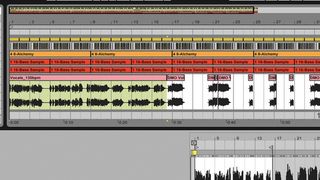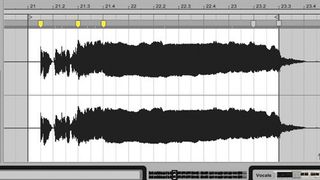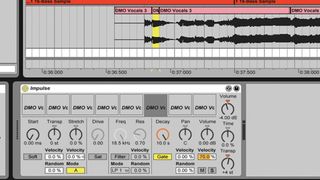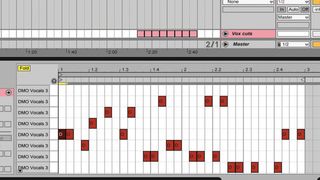How to produce quick-fire, cut-up vocal edits
Learn to create rapid sampled vocals in Ableton Live
There's no shortage of artists in the dance music world that chop up and manipulate vocals to the point that they almost cease to be vocals at all, often sounding more like short synthetic bleeps with a recognisable vocal quality.
Watch the video above and follow our step-by-step guide below to learn how to create these kind of rapid vocal edits by dissecting, warping and rearranging vocal samples using Ableton Live's clip editor and Impulse drum sampler.
For more on working with samples, check out the October issue of Computer Music (182).

Step 1: Download Vocals.wav (right click and Save As) and import it into a new track. Note that we've pre-warped this sample (we're using it at 128bpm) to save you the hassle of getting it in time! It's out of key with our track though, so we set the Transpose to +4 semitones. Now cut out the parts of the vocal you want - we use everything up to 'Would you ever let go?' along with the line 'So push it higher'.

Step 2: If there are parts where you'd like to alter the vocal timing, this can be achieved by adding then moving Warp markers. We do this to elongate the 'er' of 'higher', for use in a transition. You can change the notes of the vocal by cutting out the ones you want to edit and using the Transpose and Detune parameters (or even the Clip Envelope for glissandos, etc).

Step 3: Make a new MIDI channel and insert Live's Impulse drum sampler - we're going to use it to trigger snippets of cut-up vocals. Go through the vocal file and cut out tiny segments - single syllables that aren't recognisable as words - and put them into Impulse's eight slots. Use the Transpose and Stretch parameters to make it sound really unnatural, then adjust the Pan knob to scatter the sounds about.

Step 4: The sounds can be triggered with MIDI notes starting at C3. We program a funky pattern that works with the rest of the tune. (Short sounds like this are also good for accenting gaps in your rhythm!) This creates a great texture to work with because the formant of the vocals is altered and unnatural, so it can sit easily alongside the original vocal sample as an additional sonic layer.
Get the MusicRadar Newsletter
Want all the hottest music and gear news, reviews, deals, features and more, direct to your inbox? Sign up here.
Computer Music magazine is the world’s best selling publication dedicated solely to making great music with your Mac or PC computer. Each issue it brings its lucky readers the best in cutting-edge tutorials, need-to-know, expert software reviews and even all the tools you actually need to make great music today, courtesy of our legendary CM Plugin Suite.

"If I wasn't recording albums every month, multiple albums, and I wasn't playing on everyone's songs, I wouldn't need any of this”: Travis Barker reveals his production tricks and gear in a new studio tour

“My management and agent have always tried to cover my back on the road”: Neil Young just axed premium gig tickets following advice from The Cure’s Robert Smith











